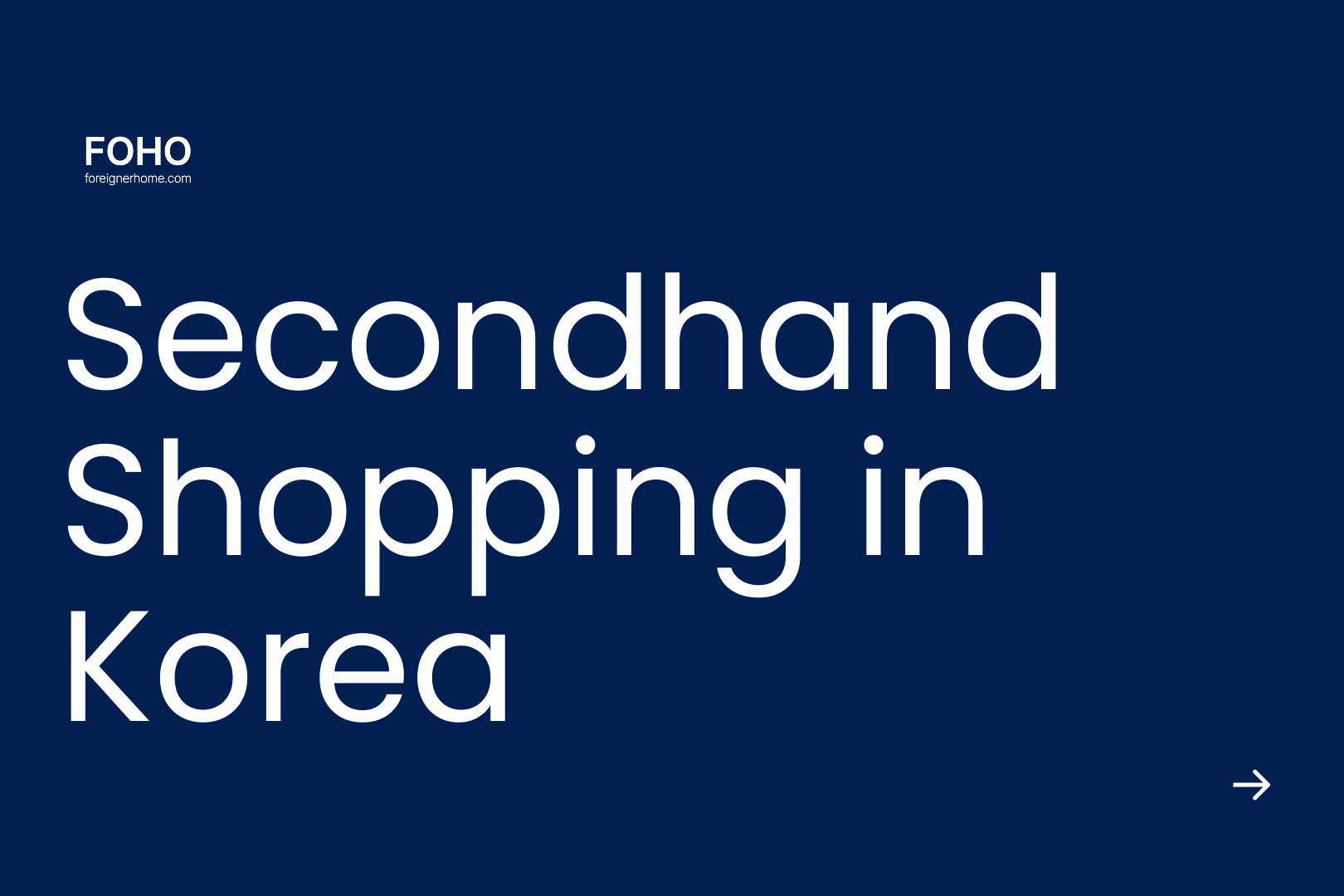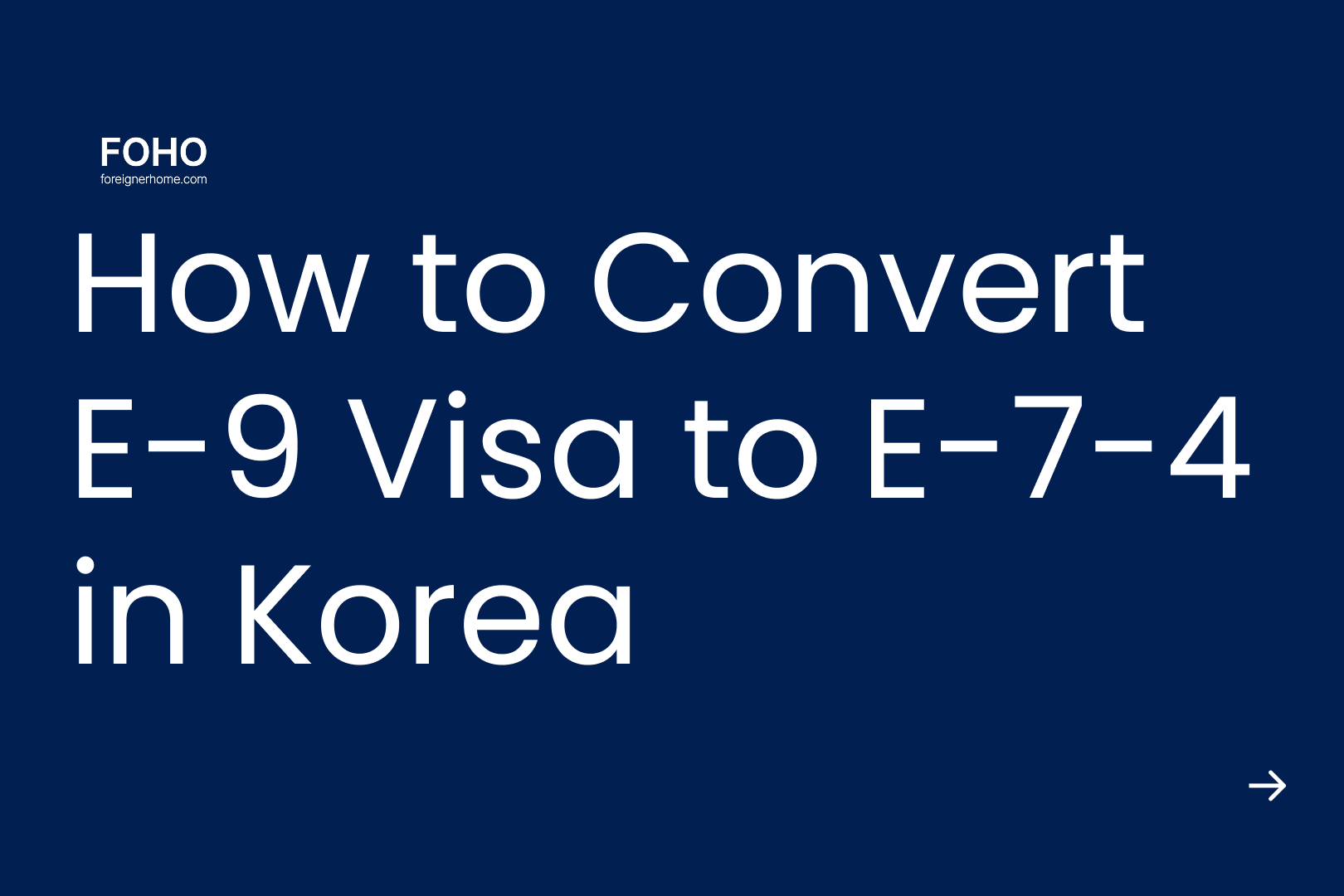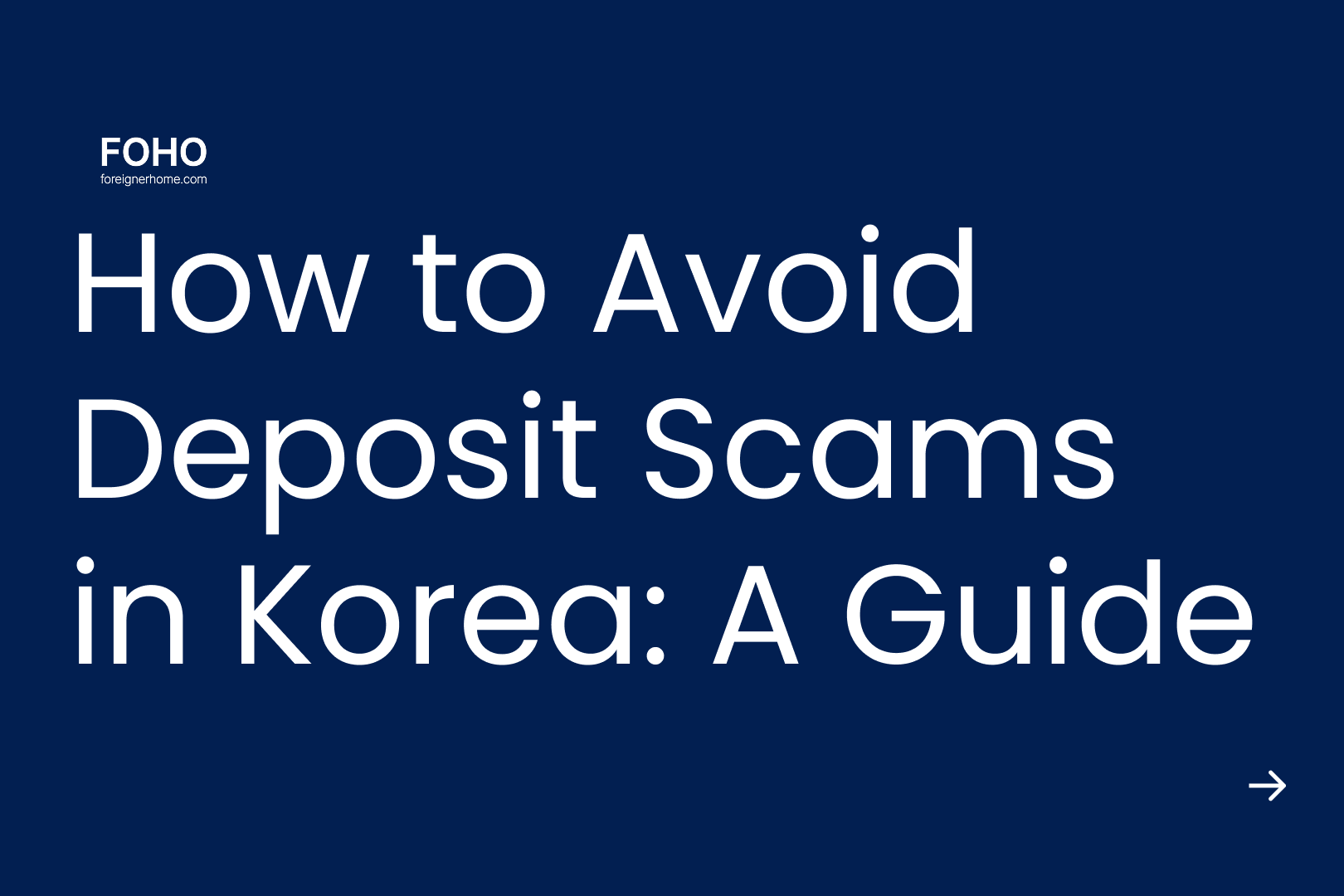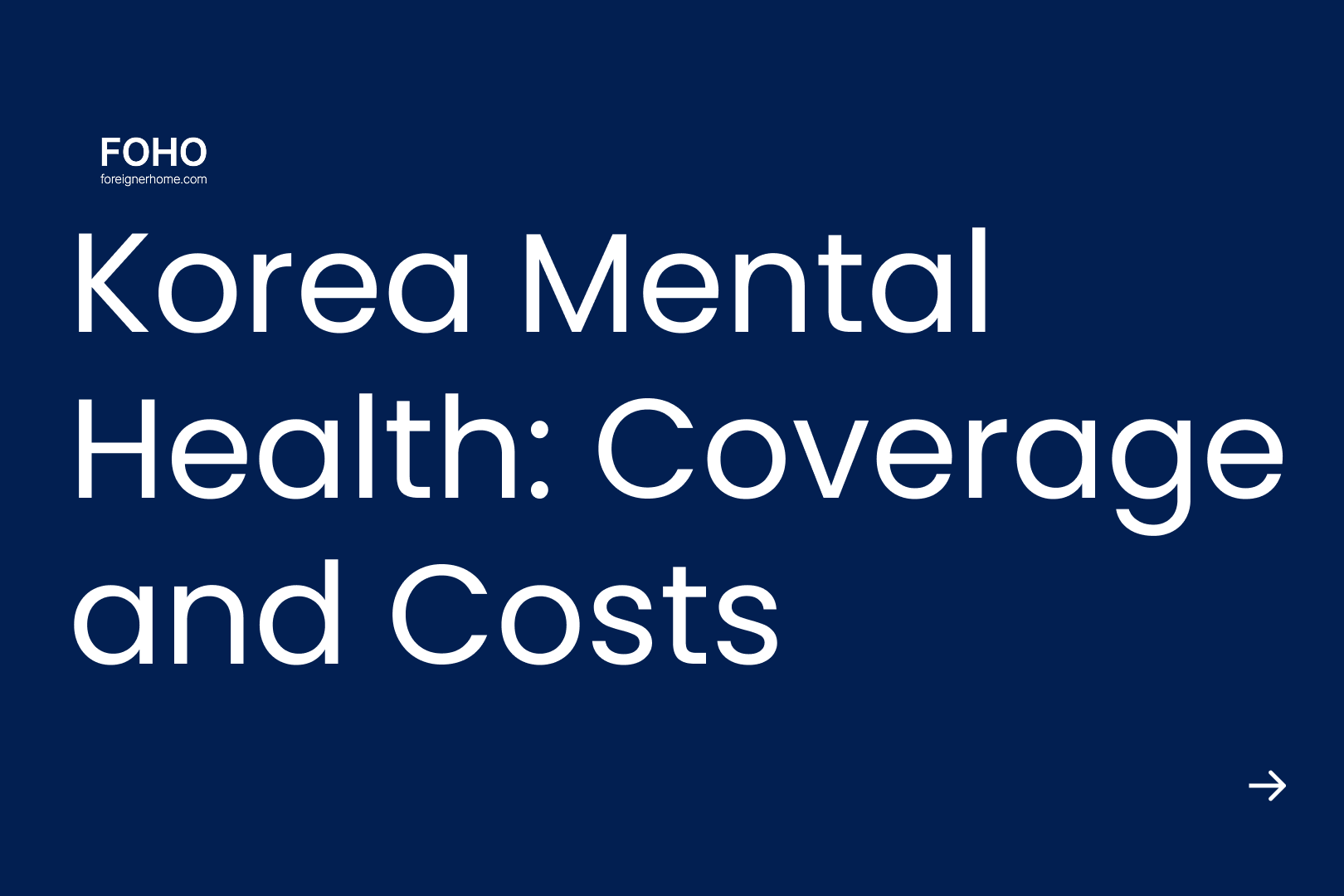FOHO Blog – Global Housing & Living Guide for Foreigners
Secondhand Shopping in Korea: The Essential Guide
New to Korea? This guide to secondhand shopping helps you navigate Karrot and Joonggonara safely. Includes setup tips, cultural norms, and a scam checklist.

Table of contents
The Ultimate Guide to Secondhand Shopping in Korea: Karrot & Joonggonara
1. Choosing Your Platform: A Strategic Decision
- Karrot (당근): A mobile app built on trust and local community. It uses mandatory GPS verification to ensure you are transacting with real neighbors. This makes it incredibly safe but limits your search to your immediate area.
- Joonggonara (중고나라): Korea's oldest and largest online marketplace. It operates nationwide and offers an unparalleled selection of items, from common electronics to rare collectibles. However, its open, anonymous nature carries a higher risk of fraud.
At a Glance: Karrot vs. Joonggonara
Feature | Karrot (당근) | Joonggonara (중고나라) | Strategic Advice |
Service Area | Hyperlocal (Requires GPS verification) | Nationwide | For everyday items like furniture or kitchenware, Karrot is safer and more convenient. |
Item Variety | Limited to your neighborhood | Extremely vast; includes everything | For specific or rare items (e.g., K-pop merch, specific camera lenses), Joonggonara is often the only option. |
Trust & Safety | Very High (Verified local users) | Low (Anonymous users, higher scam risk) | Karrot has built-in trust. On Joonggonara, you must actively verify the seller's history. |
Foreigner-Friendliness | High (Intuitive app, some English support) | Low (Korean-only, complex interface) | First-timers will find Karrot much easier to use. |
Account Creation | Korean phone number + GPS verification | Korean phone number + Naver ID | Short-term visitors may struggle to create an account on either platform. |
Primary Risk Factor | In-person transaction disputes | Scams (non-delivery, phishing) | Karrot's risks are about the transaction itself; Joonggonara's risks are about whether a legitimate transaction will even happen. |
The Third Option: Proxy Services for Joonggonara
- When to use a proxy: When you find a rare item on Joonggonara but are concerned about scams or unable to navigate the platform.
- Cost: You will pay the item price, a service fee, and domestic/international shipping costs.
2. Mastering Karrot (당근): A Step-by-Step Guide
Step 1: Account Setup and GPS Verification
Step | Action Item | Android Instructions | iOS Instructions |
Pre-Check | Confirm Physical Location | Open a map app (Naver/Kakao Maps) to verify you are in the correct neighborhood. | Open a map app (Naver/Kakao Maps) to verify you are in the correct neighborhood. |
1: Permissions | Grant Location Access | Go to Settings > Location > App permissions > Karrot. Select Allow all the time or Allow only while using the app. | Go to Settings > Karrot > Location. Select While Using the App. |
2: Accuracy | Enable High Accuracy | Go to Settings > Location. Enable Google Location Accuracy. Turn on Wi-Fi and Bluetooth scanning. | Go to Settings > Karrot > Location. Enable the Precise Location option. |
3: Device | Optimize Device Settings | Turn on Wi-Fi. Disable Power saving mode. | Turn on Wi-Fi. Disable Low Power Mode. |
4: Environment | Improve GPS Signal | Move near a window or go outdoors to get a stronger GPS signal, then try again. | Move near a window or go outdoors to get a stronger GPS signal, then try again. |
Final Step | Refresh Location in App | In the Karrot app, tap the "Change Neighborhood" button and let it select a location based on the current GPS signal. | In the Karrot app, tap the "Change Neighborhood" button and let it select a location based on the current GPS signal. |
Step 2: Understanding Karrot's Unique Culture
- How it works: Your temperature rises with positive reviews and successful transactions. It drops if you get negative feedback, miss appointments, or cause trouble.
- Why it matters: A high temperature signals that you are a trustworthy member of the community, making people more likely to trade with you. A low temperature is a major red flag.
- Pro-tip: Giving away items for free ("무료나눔") is a fast and effective way to increase your Manner Temperature ⁵.
- Do: Check the post for phrases like
네고 불가(negotiation not possible). If there's no such phrase, you can politely ask, "혹시 조금 깎아 주실 수 있을까요?" (Would a small discount be possible?).
- Don't: Never try to negotiate further when you meet in person after agreeing on a price online. This is considered extremely rude.
- Remember: Many sellers prefer a fast, hassle-free transaction at the listed price. This is called a "cool transaction" (쿨거래).
Step 3: Executing the Transaction
- Face-to-Face (직거래): The most common and recommended method. Meetings usually happen at a public, convenient location like a nearby subway station exit.
- Door Handle Transaction (문고리 거래): A unique, high-trust method. The buyer transfers money first, and the seller leaves the item hanging on their front door handle for pickup. This is generally safe due to widespread CCTV but may feel uncomfortable for some.
- Delivery (택배): Used for smaller items. The buyer almost always pays for shipping.
- Bank Transfer (계좌 이체): The most popular method. The seller sends their bank account number in the chat. For non-face-to-face deals, you must pay first.
- Cash (현금): Used for in-person transactions.
- Karrot Pay (당근페이): Karrot's built-in escrow service. You pay into the system, and the funds are released to the seller only after you confirm you've received the item. It's the safest option for delivery transactions but includes a small fee for the buyer ⁶.
3. Advanced Scam Prevention: Your Security Protocol
Your Most Important Tool: "The Cheat" (더치트)
- How to use it: Before sending any money, get the seller's phone number and bank account number. Search both in The Cheat app.
- Rule: If even one scam report appears, stop the transaction immediately.
Pre-Transaction Safety Checklist
Category | Red Flag | Why It's a Risk |
Profile History | No transaction history or a very new account. | Scammers often use disposable accounts. On Karrot, a very low Manner Temperature is a clear warning. |
Communication | Refuses to talk on the phone; insists on KakaoTalk only. | Scammers prefer untraceable messaging apps to avoid leaving a record tied to a registered phone number. |
Transaction Method | Insists on delivery only. | A classic tactic is to ask where you live, then claim to be far away to force a pre-paid delivery transaction. |
Price | The price is significantly below market value (20-30% lower). | "Too good to be true" prices are bait used to lure victims into a quick, fraudulent transaction. |
Payment Details | Asks you to send money to a third-party's account. | This is a definitive sign of a 3-Party Scam (see below). The account holder's name must match the seller's. |
Links | Sends an external link for "Safe Payment." | All official payments should happen inside the platform's app. External links are almost always phishing sites designed to steal your financial information. |
Identity | Asks for a photo of your ID card for "verification." | This is an attempt to steal your identity to use in future scams. Never share your personal ID. |
Understanding Common Scam Structures
- Simple Non-Delivery: The most basic scam. You send money for a delivery, and the seller disappears.
- Fake "Safe Payment" Phishing: The scammer agrees to use an escrow service but sends you a link to a fake website that looks identical to the real one (e.g., a fake Naver Pay page). When you enter your payment details, they are sent directly to the scammer.
- 3-Party Scam (삼자사기): A highly complex and malicious scam.
- How it works: A scammer finds a legitimate seller (A) and posts a fake ad for that same item, usually at a lower price. An unsuspecting buyer (B) contacts the scammer. The scammer gives buyer B the legitimate seller A's bank account number. Buyer B sends money to seller A. Seller A, seeing the payment, gives the item to the scammer. The scammer disappears with the item, leaving buyer B with no money and seller A with no item.
4. Essential Korean Phrases for Transactions
- 안녕하세요. 이 상품 아직 판매 중인가요?
- (Annyeonghaseyo. I sangpum ajik panmae jung-ingayo?)
- Hello. Is this item still for sale?
- 혹시 상태는 어떤가요?
- (Hoksi sangtae-neun eotteongayo?)
- What is the condition like?
- 혹시 조금 깎아 주실 수 있을까요?
- (Hoksi jogeum kkakka jusil su isseulkkayo?)
- Would it be possible to get a small discount? (The most polite way to ask.)
- 네고 가능한가요?
- (Nego ganeung-hangayo?)
- Is negotiation possible? (More direct.)
- 직거래 가능하신가요?
- (Jikgeorae ganeung-hasingayo?)
- Is a face-to-face transaction possible?
- 어디서 만나는 게 편하세요?
- (Eodiseo mannaneun ge pyeonhaseyo?)
- Where is it convenient for you to meet? (A polite way to ask.)
- 오늘 오후 6시에 OO역 앞에서 만날까요?
- (Oneul ohu yeoseot-si-e OO-yeok ap-eseo mannalkkayo?)
- Shall we meet in front of OO Station at 6 PM today?
- 물건 한번 확인해 보세요.
- (Mulgeon hanbeon hwaginhae boseyo.)
- Please check the item. (The seller will likely say this to you.)
- 네, 문제 없네요.
- (Ne, munje eomneyo.)
- Yes, it looks fine.
- 계좌이체 해드릴게요.
- (Gyejwa-iche haedeurilgeyo.)
- I'll do a bank transfer.
Glossary of Key Terms
- 당근 (Danggeun): Literally "carrot," but the name for the Karrot app. It's a play on "당신 근처의" (near you).
- 중고나라 (Joonggonara): "Secondhand Country," the name of the nationwide platform.
- 직거래 (Jikgeorae): Face-to-face transaction.
- 택배 (Taekbae): Delivery or shipping.
- 네고 (Nego): Price negotiation.
- 쿨거래 (Kul-georae): "Cool transaction." A quick, easy sale with no haggling.
- 무료나눔 (Muryo-nanum): Free giveaway.
- 매너온도 (Maeneo-ondo): Manner Temperature, the reputation score on Karrot.
- 안심결제 (Ansim-gyeolje): Safe Payment / Escrow service.
- 더치트 (The Cheat): The anti-scam verification app.
Your Smart Move: From Secondhand Finds to the Perfect Home
Settle in faster with FOHO
Browse more verified listings and message landlords in minutes. Lock in your lease with FOHO's secure payments.
Get Foreigner-Friendly Housing Tips
Get the latest news delivered to your inbox.

Nov 4, 2025
FOHO Launches Foreigner-Focused Rental Insurance
FOHO’s deposit insurance protects foreign tenants in Korea from landlord defaults. Stay safe with clear coverage and fast claims.

Oct 31, 2025
How to Convert E-9 Visa to E-7-4 in Korea
A guide for Vietnamese & Chinese E-9 workers in Korea. Learn the E-7-4 visa points system, F-2 requirements, and compare GME vs. Sentbe for remittance.

Oct 30, 2025
How to Avoid Deposit Scams in Korea: A Guide
Avoid deposit scams in Korea with our step-by-step guide. Learn to check property debt, understand the 'Deung-gibu,' and secure your deposit.

Oct 29, 2025
Korea Mental Health: NHIS Coverage and Costs
Get help with mental health in Korea. This guide for foreigners explains how to use NHIS, find low-cost options, and get medication prescriptions locally.
Subscribe to the FOHO newsletter
Actionable housing insights in your inbox.